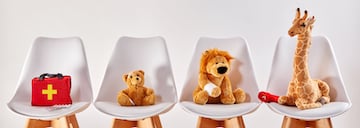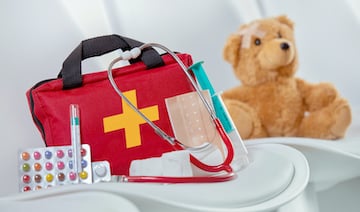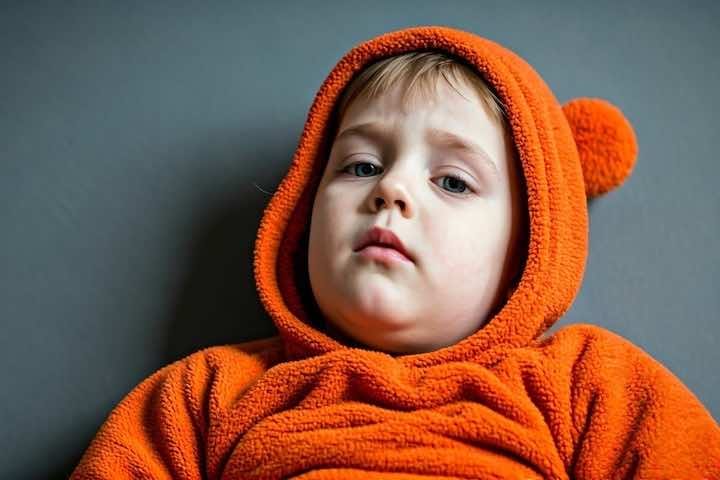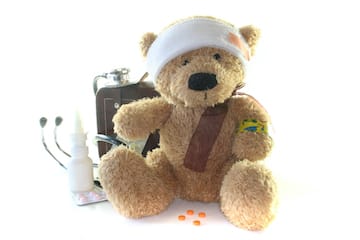WHAT IS PAEDIATRIC FIRST AID?
Paediatric First Aid is first aid given to children, babies and young people. Due mainly to their size, providing first aid differs slightly than when providing first aid to adults. Echo3 offer online CPD-Accredited Paediatric First Aid training.
What is first aid?
First Aid is defined as ‘help given to a sick or injured person until full medical treatment is available’.The ‘3 Ps’ summarises the aims of a first aider: preserve life, prevent the situation worsening, promote recovery.What is paediatric first aid?
The term ‘Paediatric First aid’ refers to the skill and knowledge required to provide effective first aid to children. Technically anyone under the age of 16.If your business involves children the responsibilities of the person appointed to take charge of first-aid arrangements must include arrangements for effective paediatric first aid.
Which businesses need paediatric first aid training?
The UK first aid regulations state all business must have appropriately trained staff. Every business must determine what is appropriate following a risk assessment.So, if you work in any of the businesses below you should have appropriate paediatric first aid training.- School, pre-school and nursery staff (Low-risk)
- Paediatric nurses
- After-school workers (Low-risk)
- Sports club staff
- Play and activity centre staff
- Childminders (Low-risk)
- Babysitters (Low-risk)
- And of course, the parents/carers/family of children and infants (Low-risk)
Does Paediatric first aid differ from normal first aid at work?
The syllabus for paediatric first aid and first aid at work (FAW) courses are very similar. The main difference is how first aid is applied in different emergencies. For example see below for the recommended way to resuscitate a child.Another big difference is the emphasis. For example both courses will cover choking and allergies but they are more likely in children so that content should be of greater priority in a paediatric course.In addition to FAW training Paediatric First Aid will usually cover Meningitis and what to do if a harmful substance has been swallowed.What is a paediatric primary survey?
The primary survey is the initial assessment and management of a trauma patient. It is a fast and systematic way to find and treat life-threatening conditions in priority order.We use the acronym DRABC to assist us with the correct order in which to perform a primary survey.DRABC
D – Danger
Make sure you, the casualty and any bystanders are safe. Don’t put your own life at risk.R – Response
Quickly check to see if the casualty is conscious. Gently shake or tap the shoulders and ask loudly ‘Are you alright?’. With a baby, tap or flick the sole of the foot to get a response. If there is none, assume they are in an unresponsive state.A – Airway
Identify and treat any life-threatening airway problems. If the child is unconscious, gently place your hand on their forehead and tilt their head back, propping the chin up slightly with your other hand to ensure the airway is open and clear.B – Breathing
Identify and treat any life-threatening breathing problems. Listen, feel and look for any signs for no more than 10 seconds. If the casualty is unconscious and not breathing normally, prepare to perform CPR.At this stage you must phone for emergency assistance on 999 or 112 and call to a bystander for a defibrillator or AED (we discuss this in a moment).C – Circulation
Identify and treat any life-threatening circulation problems. When this has been ruled out, the primary survey is complete. If the casualty is still unresponsive, start CPR.What should a paediatric first aid box include?
A paediatric first aid box should include:- Leaflet giving general guidance on first aid
- Disposable gloves
- Face shields
- Low-adherent dressings
- Hypoallergenic adhesive tape
- Hypoallergenic plasters
- Wound dressings
- A foil blanket
- Eye wash / sterile water
- Scissors
- A triangular bandage
- An inventory of content

Why is CPR so important to learn?
We need a constant supply of oxygen to survive. If our brain cells don’t get oxygen, they start to die within 3 to 4 minutes. The priorities of treatment are making sure oxygen gets into the blood and that the blood carries the oxygen to the brain. If a child has stopped breathing, or is not breathing normally, their brain will starve of oxygen. To prevent this, they require CPR, or Cardiopulmonary Resuscitation, immediately.CPR consists of a potentially life-saving combination of Rescue Breaths and Chest Compressions. Every 1 minute that this is not happening = a 10% decrease of life expectancy.With CPR, if in doubt, do it!Adult CPR usually consists of repeated cycles of 2 Rescue Breaths and 30 Chest Compressions. Adult Chest Compressions involve one hand on top of the other and pushing down with the heel of the hand by 5 to 6 cm. There are modifications when performing CPR on children and babies.What to do when a Child is Unresponsive and Not Breathing
Conduct a Primary Survey using DRABC. If a child or baby does not respond to any stimulus or will not wake up, and if it appears they have stopped breathing, you must perform CPR.Get someone to call 999 immediately. If on your own, perform 1 minute of CPR before leaving your casualty to run and get help.What is Resuscitation for children?
A guideline age for child resuscitation is from 1 year to adolescence. If you are unsure of these child CPR modifications, it’s better to revert to adult resuscitation on a child who is unresponsive and not breathing than to do nothing at all.When performing CPR on a child:- Begin with 5 initial Rescue Breaths
- ensuring the child’s chest is visibly rising and there is 1 second between each breath.
- Next, perform 30 Chest Compressions at 100 to 120 beats per minute.
- Use only one hand for CPR.
- Use the ball of your hand in the centre of the chest, keeping good contact with both the breastbone and the skin on the child’s chest.
- Push 5cm deep – a third of the chest.
- Then perform a further 2 Rescue Breaths, alternating this with 30 Chest Compressions.
- Continue alternating 2 Rescue Breaths with 30 Chest Compressions until the Emergency Services arrive, or the child starts breathing on their own.
What is resuscitation for babies?
There are modifications when performing CPR on an infant from birth to 1 year of age. Great care should be taken when performing CPR on a baby because, while a baby’s bones are more flexible, they are also much more delicate.Begin by conducting a Primary Survey using DRABC.When performing baby resuscitation:- Begin with 5 initial Rescue Breaths
- Keeping the airway open, seal your mouth around the baby’s mouth and nose.
- Ensure the airway is tilted back, but do not over-extend.
- You should be seeing the chest rise but take care not to over-inflate the lungs.
- Take 1 second between each Rescue Breath.
- Next, perform 30 Chest Compressions at a rate of 100 to 120 per minute.
- Use 2 fingers to depress the chest.
- Push to the depth of 3-4 cm.
- Then perform a further 2 Rescue Breaths, alternating this with 30 Chest Compressions.
- Continue alternating 2 Rescue Breaths and 30 Chest Compressions until the Emergency Services arrive, or the baby starts breathing on their own.
When to stop CPR?
Only ever stop CPR for three reasons:- Emergency services arrive and tell you to stop
- The casualty revives and is breathing on their own.
- You are physically exhausted. Ask a bystander to take over or swap with a bystander every 2 minutes to preserve your energy.
- The current state of the casualty (are they breathing, responsive, etc?)
- Exactly when the casualty collapsed and how long CPR has been performed for.
- If any shocks have been delivered by an AED.
- Any known medical history.
Should you use an AED on children and babies?
AEDs can be used on children over the age of one however, children under 8 require special paediatric pads. Most AEDs come with paediatric pads or have a paediatric setting to reduce the size of the shock. If paediatric pads are not available, the adult AED can be used as a last resort.It is important to note that for babies under the age of 1 year old a defibrillator should NOT be used. Instead, CPR should be performed until an emergency medical team can attend to the victim.Always check with a professional at time of emergencyIf you are performing CPR and cannot go yourself, ask a bystander to retrieve an AED as quickly as possible and use it immediately. AEDs are becoming more prevalent in workplaces and the wider community.They are computerised and are designed to guide the user with visual or vocal prompts on when to shock the casualty and how.What to do if a child is unresponsive and Breathing?
If, as a result of conducting the Primary Survey (remember DRABC), you find a child unresponsive (ie no response when you talk to them and gently tap them on the shoulder) but they appear to be breathing normally:- Call 999.
- Ensure their airway is clear by gently tilting the head back.
- Check for 10 seconds that breathing remains audibly and visibly regular.
- If the child is lying on their back, place them in the Recovery Position.
- Call 999
- Ensure their airway is clear.
- Check breathing remains regular for a maximum 10 seconds.
- Put the baby into the Infant Recovery Position.
Why use the Recovery Position?
Unlike sleep, unconsciousness can disable the body’s natural reflexes, such as coughing or gagging. It is important that unconscious casualties take priority and get urgent help.If a child or infant appears to be breathing normally but remains unresponsive, theyWhat is the Recovery position for children?
- Remove child’s glasses if wearing any and straighten both legs.
- Place the arm nearest to you at right angles to their body (palm facing upwards).
- Bring the other arm across the chest and hold the back of hand against the cheek.
- With your other hand, grasp the far leg just above the knee and pull up, keeping the foot on the ground.
- Keeping the child’s hand pressed against their cheek, pull on the leg to roll them towards you, onto their side.
- Adjust the upper leg so that the hip and knee are bent at right angles.
- Make sure the head is tilted and facing downwards to allow fluids to drain from mouth and keep the airway clear.
- Call 999/112 for emergency help.
- Check breathing regularly.
Do not:
- Give the child anything to eat or drink.
- Put a cushion under their head.
Do:
- Turn the child every thirty minutes for circulation purposes.
- Put a blanket on them.
- Check their levels of response.








